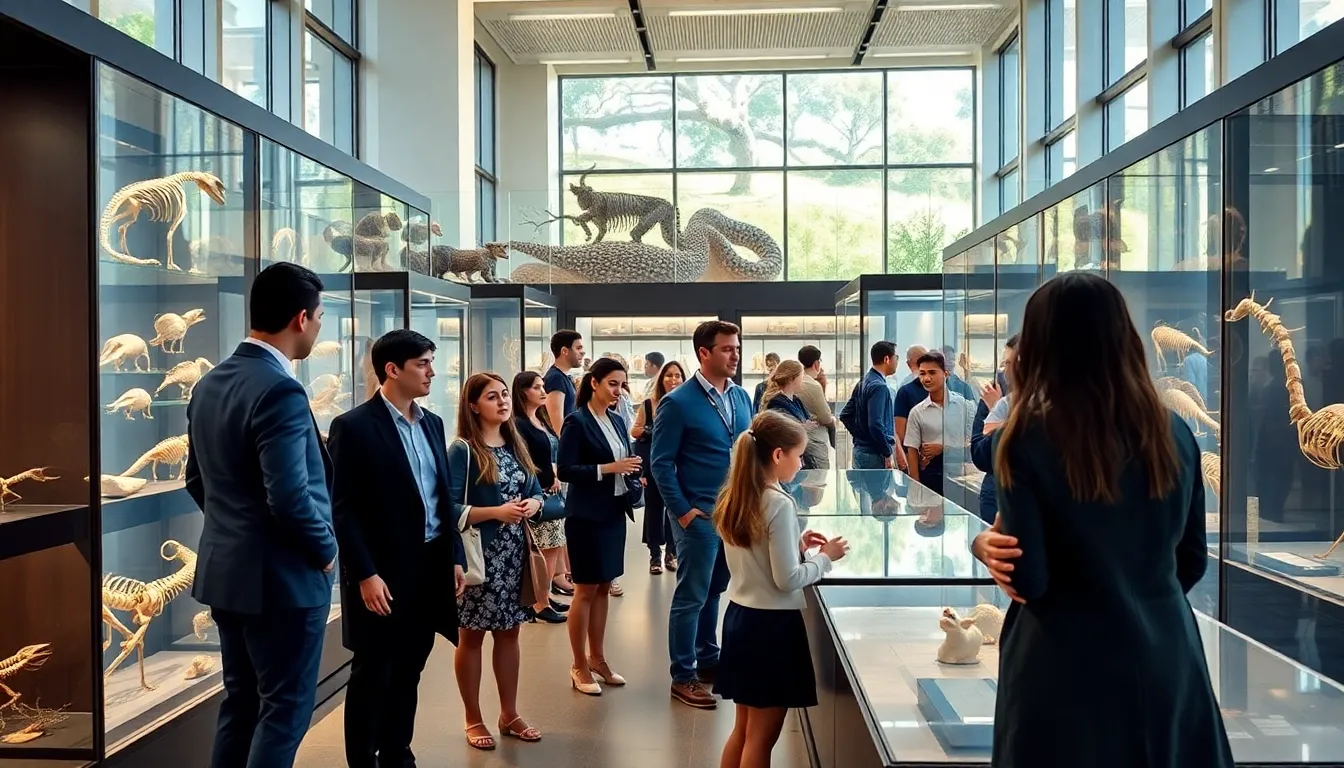Ever wondered how life science museums went from dusty old exhibits to vibrant hubs of knowledge and adventure? Picture this: a place where once existed mere skeletons of dinosaurs and jars of pickled specimens. Now, imagine interactive displays that allow visitors to play with virtual Pterodactyls or dive deep into the ocean without even getting your feet wet. Life science museums have evolved immensely over the years. They are not only educational but also engaging and fun. Let’s explore this fascinating evolution together, shall we?
Table of Contents
ToggleHistorical Context of Life Science Museums

Life science museums have a rich history dating back to the 18th century. Initially, they served as cabinets of curiosities, showcasing strange and exotic specimens collected by explorers. These early collections were often private affairs, meant to impress guests of wealthy patrons. As the 19th century rolled in, the public began to take an interest in these collections. Institutions like the British Museum and the Smithsonian began to emerge, creating spaces for education and research.
With this evolution came the desire to share knowledge with the masses. The early 20th century saw the introduction of natural history exhibits, showcasing life forms from the microscopic to the colossal. The museum experience shifted from simply observing to learning, laying the groundwork for the interactive environments we see today.
The Rise of Interactive Exhibits
The concept of interactive exhibits emerged in response to changing educational philosophies. The idea was simple: learning should be fun. As research indicated that active involvement enhances retention, museums turned to interactive displays to engage visitors more effectively. Touch screens, hands-on activities, and immersive experiences soon became the norm.
One standout example is the Exploratorium in San Francisco, which opened its doors in 1969 and has since set the standard for how museums engage the public. Visitors can conduct experiments and explore scientific phenomena, making the experience immersive and memorable. Today, it’s hard to imagine a life science museum without some form of interaction woven throughout.
Role of Technology in Evolution
Technological advancements have played a critical role in the evolution of life science museums. Gone are the days of static displays and monologue-like plaques. Now, augmented reality and virtual reality experiences allow visitors to engage with exhibits in ways that were previously unimaginable.
For instance, visitors to the Field Museum in Chicago can use AR applications to explore dinosaur skeletons in 3D, viewing how these ancient beasts moved and roamed the Earth. Besides, digital storytelling brings complex scientific concepts to life, making them accessible to audiences of all ages. The integration of technology not only captures attention but also deepens understanding, topics that once seemed daunting can now spark curiosity and excitement.
Educational Impact on Visitors
The educational mission of life science museums is paramount. These institutions have transformed into vital components of science education, bridging the gap between formal education and hands-on learning experiences. Studies show that visitors often leave with a deeper understanding of scientific principles, motivated to explore complex subjects further.
Also, life science museums also promote STEM (Science, Technology, Engineering, and Mathematics) education. Programs like workshops, seminars, and guided tours are designed to inspire young minds and foster a love for science. When children engage with these topics outside the classroom, they are more likely to remember and apply what they have learned.
Case Studies of Notable Life Science Museums
Looking at specific examples can truly highlight the differences in focus and approach between various institutions. The American Museum of Natural History in New York is renowned for its vast collections and dedication to education. Through immersive exhibits, visitors can explore everything from human evolution to ocean life.
Similarly, the California Academy of Sciences in San Francisco combines an aquarium, planetarium, and natural history museum under one roof. Their diverse offerings encourage interdisciplinary learning and make science captivating. Another notable mention is the Science Museum in London, which prides itself on its innovative approach to exhibitions, using storytelling to engage visitors in understanding the evolution of technology.
These case studies demonstrate how various museums adapt to their audiences while remaining committed to education and engagement.
Future Trends in Life Science Museums
As we look into the future, several trends are shaping the next wave of life science museums. One significant trend is sustainability. Museums are becoming more aware of their environmental impact and are incorporating eco-friendly practices, from their operations to their educational content.
Another trend to watch is the continued integration of technology. As not only virtual but also mixed reality becomes more commonplace, visitors can expect even more engaging and interactive exhibits. Besides, as societal issues become increasingly complex, life science museums will likely address topics like climate change, biodiversity loss, and public health, using their platforms to educate and inspire action.
Plus, inclusivity and accessibility will play larger roles in future designs, ensuring that all visitors, regardless of their background or abilities, can participate fully in the museum experience.









